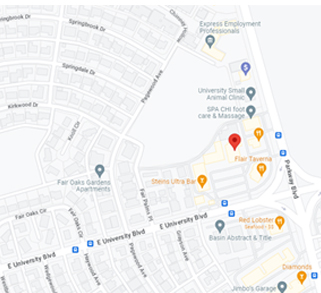Hearing loss is a common condition affecting millions of people worldwide, making everyday tasks and communication challenging. However, not all hearing loss is the same. There are two primary types: sensorineural hearing loss (SNHL) and conductive hearing loss (CHL). Each type has different causes and treatment options, so understanding the distinction is crucial for finding the right solution.
If you’re experiencing hearing difficulties, the first step toward better hearing health is scheduling a professional hearing test at Roger Clark Hearing Centers in Waco, TX.
What is Sensorineural Hearing Loss (SNHL)?
Sensorineural hearing loss (SNHL) occurs when there is damage to the inner ear or auditory nerve. This type of hearing loss is typically permanent and can be caused by several factors, including aging, exposure to loud noises, genetic conditions, infections, and certain medications.
One of the most common causes of SNHL is presbycusis, or age-related hearing loss. As we age, the delicate hair cells in the cochlea deteriorate, making it harder to hear high-frequency sounds. Another common cause is noise-induced hearing loss, which results from prolonged exposure to loud sounds such as concerts, heavy machinery, or personal audio devices played at high volumes.
People with SNHL often struggle to hear softer sounds, and speech may seem muffled or unclear. Background noise can make conversations particularly difficult. Because SNHL is typically irreversible, treatment options include hearing aids or cochlear implants, which help amplify sound and improve communication.
What is Conductive Hearing Loss (CHL)?
Conductive hearing loss occurs when sound waves cannot efficiently pass through the outer or middle ear to reach the inner ear. This can result from blockages, infections, fluid buildup, or structural abnormalities. Unlike SNHL, conductive hearing loss is often temporary and treatable with medical intervention.
Common causes of CHL include:
- Ear infections (otitis media) – Infections can cause fluid buildup in the middle ear, affecting sound transmission.
- Excessive earwax (cerumen impaction) – A buildup of wax can block sound waves from reaching the eardrum.
- Perforated eardrum – A tear in the eardrum can disrupt sound conduction.
- Otosclerosis – A condition that affects the small bones in the middle ear, preventing them from moving properly.
Individuals with CHL may feel like sounds are muffled or distant, but overall clarity is often preserved. Depending on the cause, treatment options include earwax removal, medications, surgery, or hearing aids to enhance sound transmission.
Key Differences Between SNHL and CHL
While both types of hearing loss can impact communication and daily life, the underlying cause is what sets them apart.
| Feature | Sensorineural Hearing Loss (SNHL) | Conductive Hearing Loss (CHL) |
| Cause | Inner ear or nerve damage | Blockage or structural issue in the outer/middle ear |
| Common Causes | Aging, loud noise exposure, genetics, infections | Ear infections, wax buildup, fluid, perforated eardrum |
| Reversibility | Usually permanent | Often temporary and treatable |
| Treatment Options | Hearing aids, cochlear implants | Medication, surgery, earwax removal, hearing aids |
People with SNHL often experience distorted or unclear sounds, while those with CHL usually perceive muted but clear sounds. If you’re unsure which type of hearing loss you have, a hearing test at Roger Clark Hearing with a Heart in Waco, TX is the perfect place to start.
Also Read: Types and Causes of Hearing Loss and Deafness
Can You Have Both Types of Hearing Loss?
Yes, some people experience mixed hearing loss, which is a combination of both sensorineural and conductive hearing loss. This means that there is damage to both the inner ear and the middle or outer ear.
For example, someone with long-term SNHL due to aging might develop CHL from an ear infection or excessive earwax buildup. Because mixed hearing loss involves multiple factors, treatment typically includes a combination of medical intervention and hearing aids to maximize hearing ability.
A comprehensive hearing evaluation can determine the extent of your hearing loss and the best course of action for treatment.
Seeking Professional Help
If you’re experiencing symptoms of hearing loss—such as difficulty following conversations, frequently asking others to repeat themselves, or a persistent sensation of blocked ears—seeking professional help is essential.
A hearing test in Waco, TX, can help pinpoint the type and severity of your hearing loss. From there, the appropriate treatment plan can be developed, whether it involves medical intervention, hearing aids, or other assistive devices.
Also Read: Why to Consult a Hearing Aids Specialist Rather Than a General Practitioner
Take Control of Your Hearing Health Today
Hearing loss can affect all aspects of life, from maintaining personal relationships to succeeding in professional environments. Struggling to hear conversations, missing important details, or feeling isolated due to hearing difficulties can be frustrating.
The good news is that early intervention can significantly improve your quality of life. Whether you have sensorineural or conductive hearing loss, professional treatment can make a substantial difference.
Don’t wait—schedule a hearing test with Roger Clark Hearing Centers in Waco, TX, today and take the first step toward better hearing. A simple evaluation can provide clarity and guide you toward the best solution for your needs.








